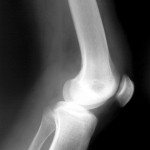If you suffer from debilitating, widespread pain, crushing fatigue, sleep disturbances, and depression, fibromyalgia could be responsible.
For year, the mainstream medical community largely ignored this disorder. Those struggling to find answers to their disrupted lives where often told, “It’s all in your head” despite the crippling symptoms. And as if the above symptoms aren’t harsh enough, people often have to deal with other symptoms of fibromyalgia, such as:
• Morning stiffness
• Tingling or numbness in hands and feet
• Headaches, including migraines
• Irritable bowel syndrome
• Problems with thinking and memory (sometimes called “fibro fog”)
• Painful menstrual periods and other pain syndromes
Who Is Likely To Get Fibromyalgia?
Over 5 million adults suffer from fibromyalgia. Women are much more likely to contract the disease – the Female: Male ratio is 7:1. However men and children can also have the disorder. Most people are diagnosed during the middle age and prevalence increases with age.
Unique Characteristics
While the precise cause and/or risk factors are still unknown, there are some characteristics associated with the onset of the disease:
• Stressful or traumatic events, such as car accidents, post traumatic stress disorder (PTSD).
• Repetitive injuries
• Illness such as viral infections
• Certain diseases such as rheumatoid arthritis, chronic fatigue syndrome, and lupus
• A genetic predisposition for fibromyalgia
People with fibromyalgia react strongly to things other people wouldn’t find painful. This is due to abnormal pain perception processing associated with fibromyalgia.
Fibromyalgia Treatment
In treating fibromyalgia, a multidisciplinary approach is necessary. This includes screening and treatment for depression. Scientific evidence suggests that aerobic exercise and anti-depressant therapy are effective in reducing the symptoms.
Lyrica, the first fibromyalgia drug to be approved by the FDA, is often prescribed for managing fibromyalgia pain. However, it does come with a long list of side effects, some of them potentially life threatening.
These side effects include, but are not limited to:
• Dizziness
• Weight gain
• Drowsiness
• Infections
• Headaches
• Dry mouth
• Chest pain
• Memory loss
• Vomiting
• Vertigo
• Flu like symptoms
The more serious side effects of Lyrica include symptoms of congestive heart failure or arrhythmia, bruising and bleeding, changes in vision, anxiety or confusion, allergic reactions, and the risk of becoming dependent or addicted to the drug.
Fortunately, there is a better option.
A 100% Safe and Natural Alternative To Fibromyalgia Pain
Why continue to suffer from fibromyalgia pain or risk the potentially dangerous side effects of prescription drugs when there is a new 100% natural alternative available to you right now?
PreArthros™ and PreArthros+ ™ are natural botanical formulations that work together to reduce inflammatory joint pain caused by arthritis. These natural substances contain plant-based components that not only relieve arthritis pain, they also serve to protect the cardiovascular system, they are easy on the stomach, and will not harm the kidneys.
Hundreds of doctors have used PreArthros™ and PreArthros +™ to treat thousands of patients for over two years. The results have been remarkable — these two supplements have been shown to lower pain and inflammation on an average of 80%.
PreArthros™ is completely affordable at only $9 per week. You can find out more about PreArthros™ and PreArthros +™ right here. There IS help for your fibromyalgia pain. Take control of your life today and don’t spend another minute worrying about how you’re going to manage your pain.
 Many people are well aware of arthritis and its symptoms, but may be less well informed about ankylosing spondylitis, a condition that causes inflammation in the joints of the spine and pelvis. The condition causes considerable pain and can lead to deformity. Ankylosing spondylitis can also cause inflammation in other parts of the body, including the eyes and intestines.
Many people are well aware of arthritis and its symptoms, but may be less well informed about ankylosing spondylitis, a condition that causes inflammation in the joints of the spine and pelvis. The condition causes considerable pain and can lead to deformity. Ankylosing spondylitis can also cause inflammation in other parts of the body, including the eyes and intestines.
